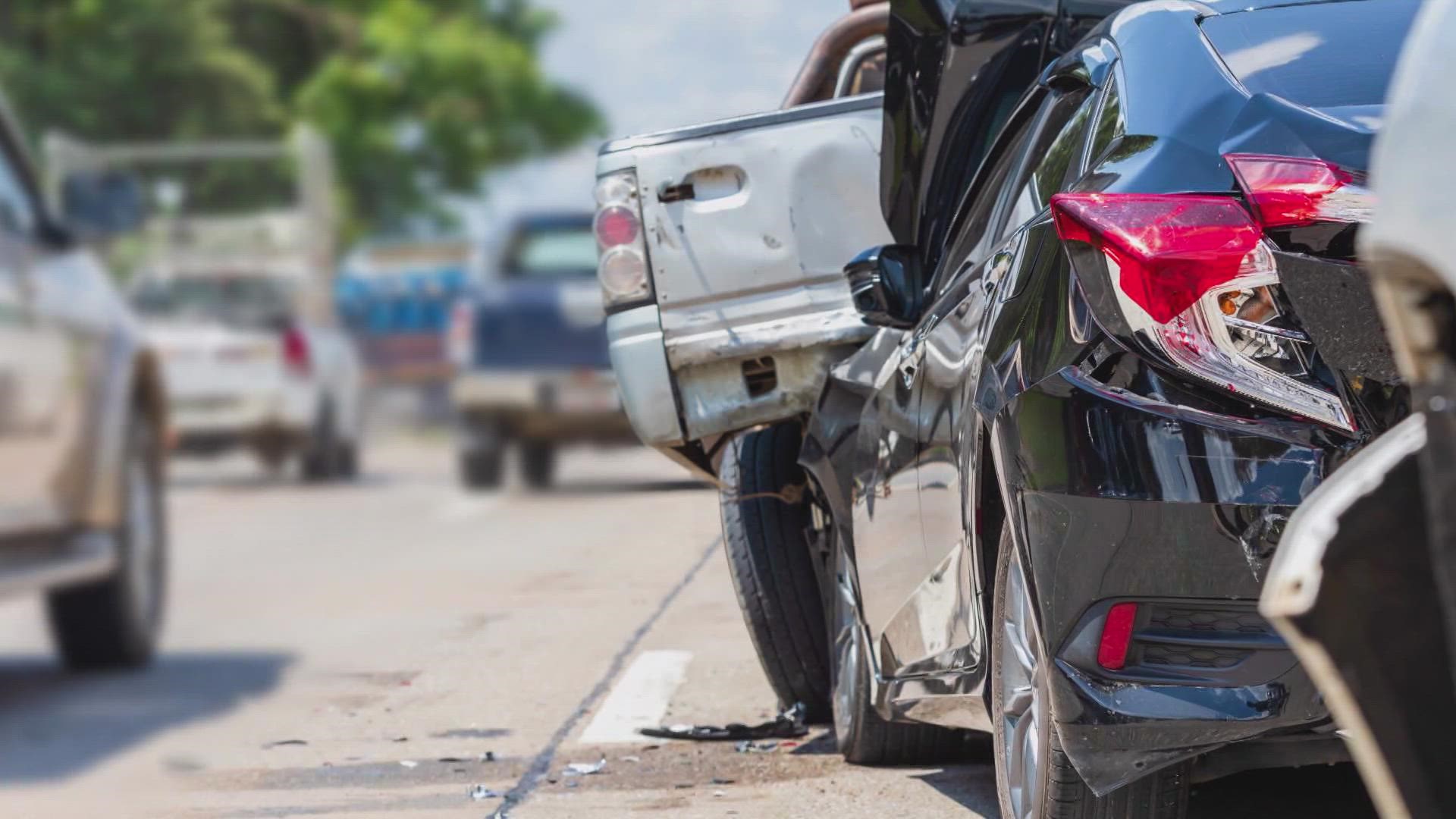DALLAS — Good news! Since I just reminded you again in August to make sure you have enough homeowner’s insurance coverage, I am definitely not going to repeat that you REALLY SHOULD MAKE SURE YOUR HOME IS NOT UNDER-INSURED. Instead, let’s talk about how what you drive might be underinsured.
Vehicles are costing a lot more…so repairing them is, too
New and used automobile prices have raced to record highs this year. Think about that the next time you drive. Zooming along in close proximity, your car, the truck right in front of you, and the SUV in the lane right next to you might all be worth a lot more.
As Bankrate pointed out earlier this year, it may cost much more than it did a year or two ago for your insurance to repair or replace all those vehicles if you crash into one or both of those automobiles next to you.
Additionally, Bankrate notes that medical costs are up 5.1% since last year. So, if your accident has an injury, covering that may now be more expensive, too.
Your premium may have gone up…maybe a lot…but did your coverage?
You may be one of many Texans who has noticed that your vehicle insurance premium has gone up…maybe by a lot. S&P Global Market Intelligence tracks this monthly. These are the increases they noted just in the month of July, but they report on insurance rate increases every month.
In 2022, the site detailed numerous auto insurance rate increases imposed by many different insurers in Texas ranging from 4 percent to 15 percent.
But what about your coverage? Did it go up? Do you have enough insurance to make up for inflation-related extra costs? It’s something you should really talk about with your insurer, especially if you haven’t adjusted your coverage in the last year or so.
Adding coverage and shopping around for rates
Understandably, if your premium is already rising you may not be in the mood to increase it more by adding extra coverage. But Bankrate makes a great point about that in its analysis.
The site had a firm run the numbers and found that the average premium for minimum liability coverage was $21 dollars less per month than what you would pay for a high-end amount of insurance ($135/month for Minimum Liability Coverage versus $156/month for 250K/500K/100K Coverage).
Those numbers will vary by provider, but they illustrate how adding a lot more coverage may not be as expensive as you think. Money Geek explains what each of those numbers means and has some tips on coverage amounts.
Shop around, know what your coverage is currently, and think about how much coverage you may need. Especially in light of the rising costs of cars and medical care, which may be an important conversation for you to have with your insurer or potential insurer.
NerdWallet explores some things to consider when you are shopping around for auto insurance.
On the subject of auto insurance: Keep receipts!
I know…receipts can be a lot to keep up with, especially in an ever-more-digital world. But hang on to those slips of paper for auto-related stuff.
I have a friend who just walked down a really long road with his insurer. I say he walked down that road because he couldn’t drive his truck, which was in the shop for months awaiting an accident repair. After all that waiting, the insurance company decided to total the vehicle.
But the odometer was damaged, so they offered him far less money because they thought his truck had many more miles on it than it actually did. To make his case, my friend turned to his most recent oil change receipt to prove his mileage wasn’t that high.
But it had an out-of-place digit (think 112,734 miles instead of 12,734 miles). Eventually, he was able to prove his correct mileage and get a proportional payout from his insurer, but it was a hassle on top of what had already been a long, frustrating experience.
I went through something similar years ago when trying to claim tread warranty on tires that wore out way too quickly. I hadn’t previously noticed that on the original receipt when they installed the tires, they had pinned my mileage at something like 6,000 miles when the car actually had something more like 60,000 miles.
So, at 70,000 miles my new tires were still very new, with only 10,000 miles on them…unless you considered that the receipt said they were put on at 6,000 miles, in which case it appeared they had been driven for 64,000 miles. A big difference.
I was able to prove the correct figure with a car inspection from around the same time that clocked my actual mileage around the time the tires were installed at closer to that 60,000-mile figure.
So, keep those receipts. And actually, look at them at the point of sale to make sure the date and mileage is correct!

